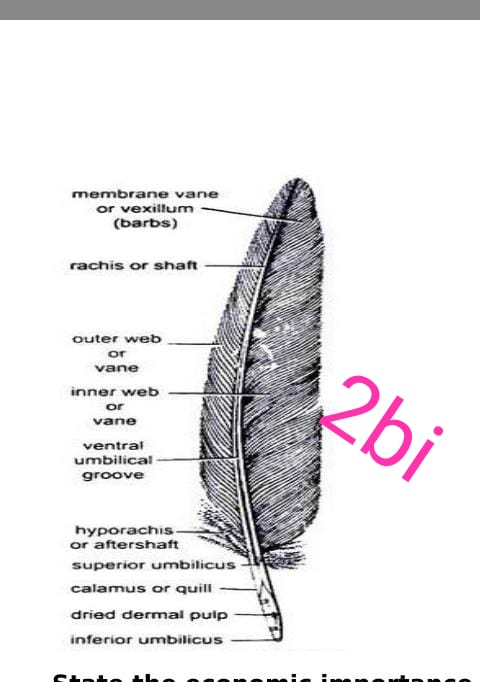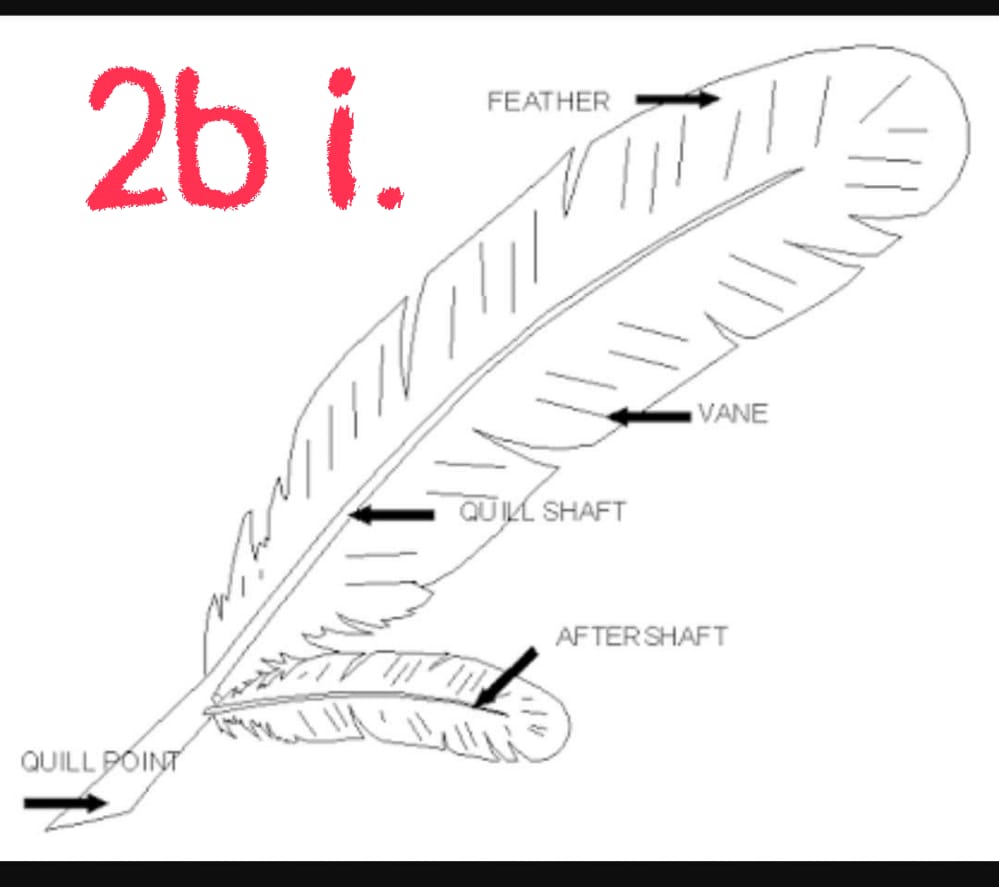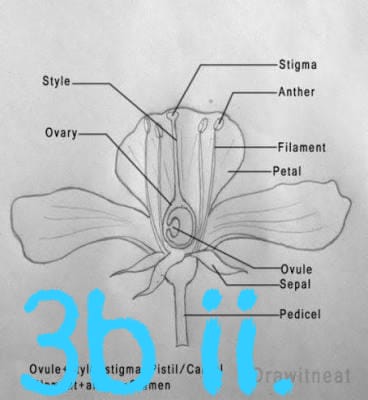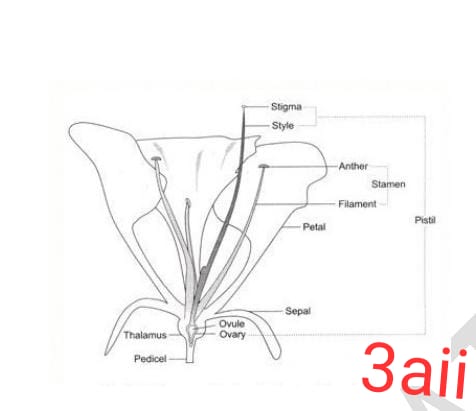NECO 2020 BIOLOGY PRACTICAL DIAGRAM ANSWERS
Here are clear detailed diagram answers for biology practical.
Specimen ANSWERS
BIOLOGY PRACTICAL SPECIMEN
SPECIMEN A = Yam tuber(Fresh)
SPECIMEN B= Cassava tuber(Fresh)
SPECIMEN C= Quadrat
SPECIMEN D= Insect net
SPECIMEN E= Rain gauge
SPECIMEN F=Rice grain(paddy)
SPECIMEN G= Dry groundnut seeds
SPECIMEN H= contour feather
SPECIMEN I= Quill feather
SPECIMEN J= Filoplume
SPECIMEN K= Millipede
SPECIMEN L= Centipede
SPECIMEN M= Grasshopper
SPECIMEN N= Spider
SPECIMEN O=Larva(Housefly)
SPECIMEN P= Larva(mosquito)
SPECIMEN Q= Flame of the forest flower(Flamboyant)
SPECIMEN R= Hibiscus flower.




NECO-BIOLOGY-PRACTICALS-ANSWERS
(1ai)
Specimen; A is yam tuber
Specimen; B is cassava tuber
Specimen; C is quadrant
Specimen; D is insect net
Specimen; E is rain guage
Specimen; F is rice grain
Specimen; G is dry groundnuts seed
(1aii)
Specimen; A is propagated from small tubers
Specimen; B is propagated by stem
Specimen; F is propagated by seeds
(1aiii)
Specimen; C is used for for study of the distribution of an item over a large area.
Specimen; D is used for prevention against insects
Specimen; E is used to measure the precipitating rain
(1aiv)
Diagram of insect net.
(1bi)
(i)The surface of B turn blue-black
(ii)starch is present
(1bii)
Specimen; F grains (cereals)
Specimen; G puises (legume)
(1biii)
(i)The paper appears translucent
(ii) Specimen; G contain fat and oil or fat and oil is present in specimen G
(1biv)
Fat and oil
(2ai)
Specimen; H is contour feather
Specimen; I is quill feather
Specimen; J is Filoplume
Specimen; K is millipede
Specimen; L is centipede
(2aii)
(i)They provide insulation to birds
(ii)Feathers allow for flight
(iii)Feathers are used for defense
(iv)Feathers are used for camouflage
(2aiii)
(i)Wings
(ii)Tail
(2bi)
Diagram of specimen I.
(2bii)
(i)Specimen; H serve as aerodynamic
devices for flight
(ii)Specimen; J are used principally as insulation, to conserve body heat.
(2biii)
Specimen; K belong to the class Diplopoda
Specimen; L belong to the class Chilopoda.
(2biv)
In tabular form
-Specimen; K-
(i)millipedes are more rounded.
(ii)Millipedes have two sets of legs per segment positioned directly under their body.
-Specimen; L-
(i)centipedes have a flatter body
(ii)Centipedes have one set of legs per segment positioned on the side of their body.
(3ai)
Specimen; M is Grasshopper
Specimen; N is spider
Specimen; O is Larva (house fly)
Specimen; P is Larva ( mosquito)
Specimen; Q Flame of The forest flower
Specimen; R hibicuss flower
(3aii)
(i)Specimen; M belongs to Insecta
(ii)Specimen; N belongs to Arachnida
(3aiii)
(i)Specimen; N has four pairs of legs (eight total).
(ii)N has also have two additional pairs of appendages.
(iii)Specimen; N do not have antennae or wings.
(3aiv)
Specimen; O is Leftovers foods
Specimen; P is stagnant water
(3bi)
(i)anthers
(ii)filaments
(3bii)
Diagram of specimen Q.
====================================
Completed.


